- News
- Reviews
- Bikes
- Accessories
- Accessories - misc
- Computer mounts
- Bags
- Bar ends
- Bike bags & cases
- Bottle cages
- Bottles
- Cameras
- Car racks
- Child seats
- Computers
- Glasses
- GPS units
- Helmets
- Lights - front
- Lights - rear
- Lights - sets
- Locks
- Mirrors
- Mudguards
- Racks
- Pumps & CO2 inflators
- Puncture kits
- Reflectives
- Smart watches
- Stands and racks
- Trailers
- Clothing
- Components
- Bar tape & grips
- Bottom brackets
- Brake & gear cables
- Brake & STI levers
- Brake pads & spares
- Brakes
- Cassettes & freewheels
- Chains
- Chainsets & chainrings
- Derailleurs - front
- Derailleurs - rear
- Forks
- Gear levers & shifters
- Groupsets
- Handlebars & extensions
- Headsets
- Hubs
- Inner tubes
- Pedals
- Quick releases & skewers
- Saddles
- Seatposts
- Stems
- Wheels
- Tyres
- Health, fitness and nutrition
- Tools and workshop
- Miscellaneous
- Cross country mountain bikes
- Tubeless valves
- Buyers Guides
- Features
- Forum
- Recommends
- Podcast
review
£2,699.90
VERDICT:
An innovative design that offers a true road bike performance while being packable into a suitcase-sized travel bag
Weight:
7,150g
Contact:
At road.cc every product is thoroughly tested for as long as it takes to get a proper insight into how well it works. Our reviewers are experienced cyclists that we trust to be objective. While we strive to ensure that opinions expressed are backed up by facts, reviews are by their nature an informed opinion, not a definitive verdict. We don't intentionally try to break anything (except locks) but we do try to look for weak points in any design. The overall score is not just an average of the other scores: it reflects both a product's function and value – with value determined by how a product compares with items of similar spec, quality, and price.
What the road.cc scores meanGood scores are more common than bad, because fortunately good products are more common than bad.
- Exceptional
- Excellent
- Very Good
- Good
- Quite good
- Average
- Not so good
- Poor
- Bad
- Appalling
The Ritchey Break-Away Carbon is a lightweight, performance-focused frameset that splits in two and packs down small enough to take as standard luggage when you fly. It really is a clever design.
> Find your nearest dealer here
I usually talk about the ride first in a review because that's the exciting bit, but the Break-Away's USP is the innovative system by which it splits in half, so let's take a look at that to begin with.
Packing the Break-Away
The Break-Away splits at the top of the seat tube and at the bottom of the down tube, just in front of the bottom bracket, doing a similar job to S&S couplings but at a lighter weight. The top of the seat tube slots inside the end of the top tube, and the junction, which doubles as the seatpost clamp, is secured by two bolts.
At the bottom, two flanges that meet on the down tube are held together by a hinged clamp that bolts around the circumference of the tube.
I won't go into masses of detail but in order to pack the Break-Away you need to remove the pedals, disconnect the two parts of the cables (they use screw-in connectors), take off the handlebar and stem, remove the wheels and seatpost, and finally separate the two parts of the frame. That's all straightforward with a set of hex keys.
Then you need to package it all away into the travel bag. Again, it's not nuclear physics – anyone could do it. Ritchey has various protectors within the travel bag that comes as part of the package, but you might want some additional packaging material – pipe lagging or bubble wrap, for instance – to make sure everything is safe.
I printed off the instruction sheet, got a cup of tea, and set to work. I had the Break-Away packed up in 20 minutes – before I'd even finished my cuppa – and that included stopping to take a few photos along the way. That was without rushing and without stress. Honesty, it's really simple. I reckon you could do it in 10 minutes once you've learnt the process and don't need to refer to the instructions.
You'll be amazed at just how small the packed down bike is. Two dimensionally, it's not much larger than the size of the wheels. The travel bag comes with straps and its own little wheels so it's easy to move around, just like a normal suitcase.
Travelling with the Break-Away
The Break-Away's travel bag measures 8.5in x 26.5in x 31in (21.6cm x 67.3cm x 78.7cm). That's too big for cabin baggage, obviously, but it's small enough to be checked in as standard hold luggage on most airlines without incurring extra fees (there are exceptions, so always check out your airline's policies before flying).
I checked the EasyJet hold luggage allowance, for example. The maximum total size (length + width + height) of any item of standard hold baggage must be under 275cm. The Break-Away in its travel bag is comfortably below that at 167.6cm.
The weight limit for standard hold baggage with EasyJet is 20kg. The built-up Break-Away that I've been riding, plus its travel bag, is 13.8kg.
A standard bike in a standard bike box counts as oversized luggage and in most cases (there are exceptions) will incur an extra charge. A boxed bike is currently £35-£40 (depending on weight) per flight (not per booking) with EasyJet, for example, when booked in advance, and more if you pay at the airport.
> Check out road.cc's guide to flying with your bike
Travelling with the Break-Away could save you airline charges although, of course, you do have to buy it in the first place, and it's not cheap.
You'd have to save a lot of £40s to outweigh the £2,699.90 frame and fork price, of course (67.4975 of them, to be precise), but that's not the whole story, if you were to buy the Break-Away as your main/sole bike as opposed to an additional bike that you just used while travelling. Anyway, I'll leave you to work out the economics for your own personal circumstances.
Having a bike that packs into a suitcase-sized bag rather than a normal bike box might also save you hassle travelling to and from the airport. Taxis, trains and buses can sometimes be difficult with a huge bike box (I once had trouble getting from an off-site airport car park to the terminal with a bike box because I was apparently supposed to have booked it on the shuttle bus, FFS!). All that stuff is taken out of the equation by the Break-Away.
The ride
So the Ritchey Break-Away has plenty to offer in terms of travelability. Portability. Flyability. Whatever. But the big question is whether it's a bike that's actually worth taking with you. The short answer is that it is.
First things first: you certainly don't jump aboard the Break-Away and feel that the connection between the two parts of the frame is anything other than perfectly solid. If you didn't already know, you wouldn't be able to detect that it splits in the middle purely from the way that it rides.
Another thing that's worth pointing out early on is that Ritchey hasn't made any compromises in terms of fit. What you get here is a proper road bike geometry.
I've been using the large sized model with a 540mm seat tube, a 566mm effective top tube, and a 170mm head tube. The head angle and seat angle are both 73.5mm. The stack (the vertical distance between the centre of the bottom bracket and the top of the head tube) on this size is 580mm and the reach (the horizontal distance between those two points) is 394mm.
That's a fairly typical road bike setup, more towards the race end of the spectrum than the endurance end. It's a setup that I got along with just fine.
If you're used to a super-stiff race bike with oversized everything, the Break-Away isn't quite that. You get a 1 1/8in headset (top and bottom) here, an English threaded bottom bracket and, though chunky enough, the tubes aren't as overbuilt as you'll find on some out-and-out race bikes.
Get out of the saddle and sprint hard or bend the cranks on a steep climb and you will elicit some movement at the bottom bracket but we're not talking about loads. The Break-Away feels like a bona fide, card carrying road bike that just happens to be able to split in two.
Smashing through downhill bends is a similar story. The front end stiffness isn't quite up there with the very best but the Break-Away is no slouch when it comes to steering accuracy either. You're not left thinking that you have to accept sub-standard on-the-road performance in order to gain travel convenience. Far from it.
The Ritchey offers plenty of comfort via its slim stays and fork legs, and it takes a 27.2mm seatpost to soak up more vibrations from the road. Our review bike came with 25mm Ritchey WCS Race Slick tyres fitted but there's enough space to run 28s if you prefer.
The Break-Away is a decent weight too. It's sold as a frameset only with a claimed weight of 1,810g. That might sound a little heavy for something costing £2,700 but, of course, you have to factor in the fixings, the fact that the two parts of the frame overlap where they meet, those joints need to be built strong to handle the pressure of clamping... This isn't a normal frame.
Our complete bike, built up with high-end kit including a Shimano Dura-Ace groupset and Ritchey's own WCS Apex Carbon 38mm wheels, weighs just 7.15kg (15.8lb). Bearing in mind that the UCI's minimum weight limit for racing is 6.8kg, that's an impressively light setup and the Break-Away feels responsive and flickable out on the road. If you get dropped on the climbs by the locals when you're away on your travels, you won't be able to blame the bike.
Summing up
All in all, the Break-Away achieves its aims very well indeed. It's designed for people who regularly travel by air and who don't want the bother/expense of taking oversized baggage or organising a hire bike.
The handling isn't quite as sharp as that of an out-and-out competition bike, but the Break-Away is lightweight and comfortable, and you can take it anywhere in the knowledge that you're going to be able get the miles in on a familiar bike when you arrive.
Thanks to Cadence bike shop in Bath for its help in putting together this review.
Verdict
An innovative design that offers a true road bike performance while being packable into a suitcase-sized travel bag
road.cc test report
Make and model: Ritchey Break-Away Carbon frameset
Size tested: Large
Frameset
Tell us what the frameset is for, and who it's aimed at. What do the manufacturers say about it? How does that compare to your own feelings about the bike?
Ritchey says: "The patented Ritchey Break-Away design has been heralded by mainstream cycling media as one of the most innovative bikes on the market today. This incredible blend of travel convenience and no-compromise performance is now available in a lightweight, stiff yet silky smooth full carbon version.
"Carbon fibre bikes for travel? Yes. Ritchey has offered the Titanium Carbon Break-Away (with a full carbon rear triangle and fork) for years with no issues. Our carbon fibre designs are very strong - the force required to damage your Carbon Break-Away while packed in its case would have also damaged any frame of any material."
State the frame and fork material and method of construction
The frame and fork are both carbon fibre. The frame splits at the top of the seat tube and the bottom of the down tube.
Overall rating for frameset
9/10
Tell us about the build quality and finish of the frame and fork?
The quality is high throughout.
Tell us about the geometry of the frame and fork?
The frame is built to a fairly typical road bike geometry – more race orientated than endurance focused.
How was the bike in terms of height and reach? How did it compare to other bikes of the same stated size?
It's a size large which Ritchey describes as a 56.5cm effective frame size. It's not ridiculously aggressive but it's closer to a traditional race geometry than an endurance geometry.
Riding the bike
Was the bike comfortable to ride? Tell us how you felt about the ride quality.
Yes, it's comfortable thanks to a little give in the frame, a 27.2mm seatpost and the ability to fit 28mm tyres.
Did the bike feel stiff in the right places? Did any part of the bike feel too stiff or too flexible?
It's not as stiff, either at the bottom bracket or head tube, as a pure race bike of this price, but unless you're sprinting for signs you probably won't notice it much.
How did the bike transfer power? Did it feel efficient?
It doesn't feel super-efficient like a top end race bike, but it feels efficient enough.
Was there any toe-clip overlap with the front wheel? If so, was it a problem?
A little, but not a problem.
How would you describe the steering? Was it lively, neutral or unresponsive? The lively side of neutral, fairly typical for a road bike of this kind.
Tell us some more about the handling. How did the bike feel overall? Did it do particular things well or badly?
It's not as pin sharp as some road bikes out there but the Break-Away can be built up into a lightweight and comfortable bike that rides very well.
Rate the bike for efficiency of power transfer:
7/10
Rate the bike for acceleration:
8/10
Rate the bike for sprinting:
7/10
Rate the bike for high speed stability:
8/10
Rate the bike for cruising speed stability:
8/10
Rate the bike for low speed stability:
8/10
Rate the bike for flat cornering:
7/10
Rate the bike for cornering on descents:
7/10
Rate the bike for climbing:
8/10
Your summary
Did you enjoy riding the bike? Yes
Would you consider buying the bike? Yes, if I wanted to travel with a bike frequently.
Would you recommend the bike to a friend? Yep
Rate the bike overall for performance:
8/10
Rate the bike overall for value:
8/10
Use this box to explain your score
Our score system doesn't really work for the Break-Away because it's such an unusual bike. We don't mark bikes according to their ability to be packed up small – obviously – but that's one of the Break-Away's key features. Plus, to score it for power transfer means comparing it to other road bikes for power transfer, but other road bikes don't have to factor in the need to be split in half for travel so they're at a huge advantage there.
I think that if you're considering the Break-Away you need to think about it on its own terms. The bottom line is that it offers a very good road bike ride with the added advantage of being packable into a suitcase-sized travel bag, and my overall scores reflect that.
It would, of course, be a viable option for more people if it was cheaper, but you could say that about a lot of things!
About the tester
Age: 43
I usually ride: My best bike is:
I've been riding for: Over 20 years I ride: Most days I would class myself as: Expert
I regularly do the following types of riding: commuting, club rides, sportives, general fitness riding
Mat has been in cycling media since 1996, on titles including BikeRadar, Total Bike, Total Mountain Bike, What Mountain Bike and Mountain Biking UK, and he has been editor of 220 Triathlon and Cycling Plus. Mat has been road.cc technical editor for over a decade, testing bikes, fettling the latest kit, and trying out the most up-to-the-minute clothing. He has won his category in Ironman UK 70.3 and finished on the podium in both marathons he has run. Mat is a Cambridge graduate who did a post-grad in magazine journalism, and he is a winner of the Cycling Media Award for Specialist Online Writer. Now over 50, he's riding road and gravel bikes most days for fun and fitness rather than training for competitions.
Latest Comments
- ubercurmudgeon 43 min 9 sec ago
I had three different cyclocross bikes before the marketing departments at various bicycle companies came up with the "gravel" category. All of...
- Sredlums 1 hour 27 min ago
Maybe the UK could try to reach some sort of agreement with the EU over things like international trade and such.
- David9694 1 hour 57 min ago
Cumbria County Council was a 1974 creation, merging the of old County Borough of Carlisle, and counties of Cumberland, and Westmorland - in which...
- Backladder 2 hours 8 min ago
If BC want to insist on barriers then they should have their own stock loaded on a truck that they can rent out to organisers at reasonable cost,...
- Miller 2 hours 38 min ago
Well, there's lifetime bans and there's lifetime bans. Banning an 88 year old don't impress me much.
- Gkam84 5 hours 44 min ago
I think that is why blind eyes have been turned in the UK, internationally aswell, with things like the Redhook crits, there were many licensed...
- mdavidford 6 hours 53 min ago
Ahem - other esporters(?) might be rather surprised to hear that the UCI has taken over their events - I think that would be the Cycling Esports...
- Bungle_52 7 hours 2 min ago
I wonder how he got to the game?
- OldRidgeback 7 hours 4 min ago
You'd need some good wet weather gear for that ride too.
- OnYerBike 9 hours 28 min ago
It seems to me that the most likely explanation is that whoever provided that quote fails to grasp the difference between a "public right of way"...















































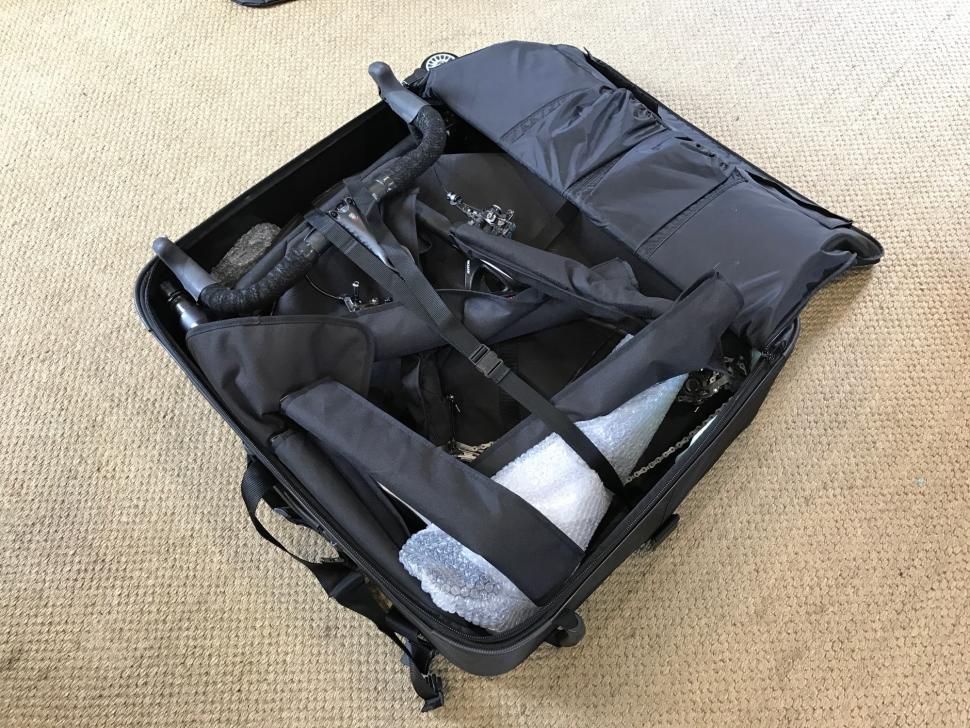
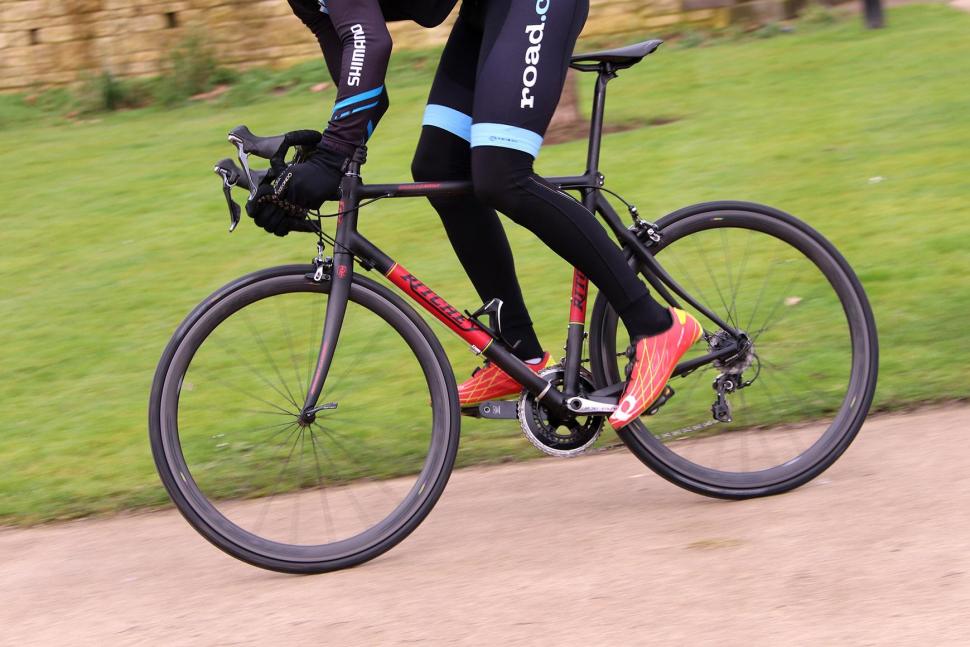
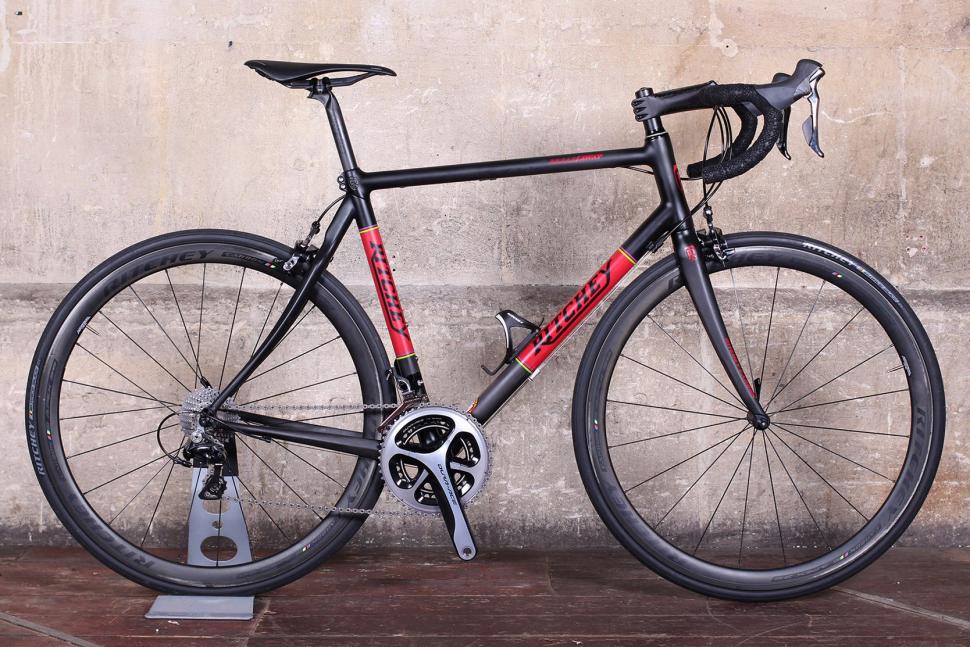

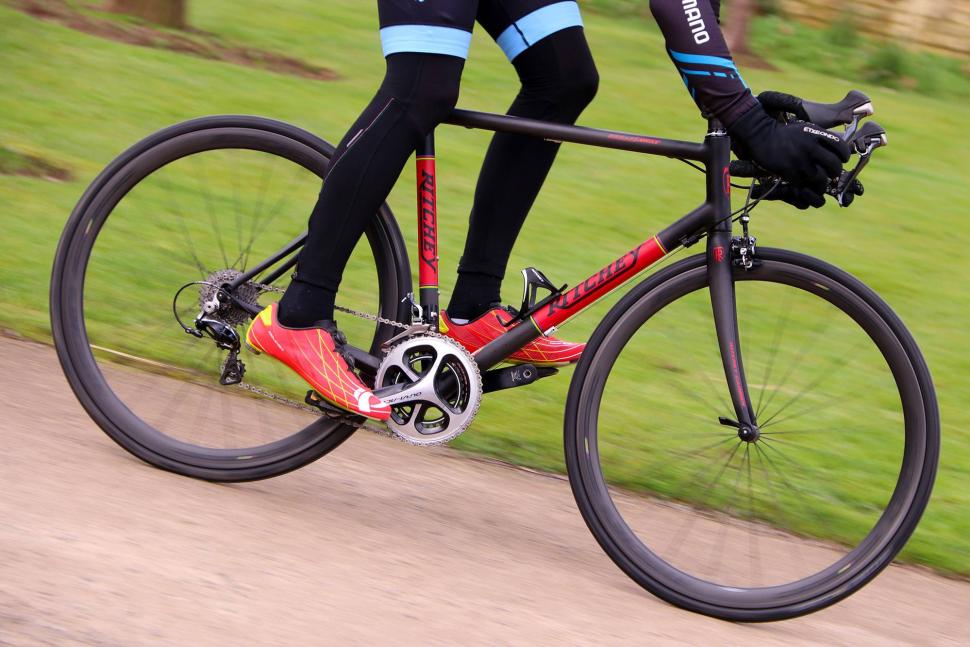
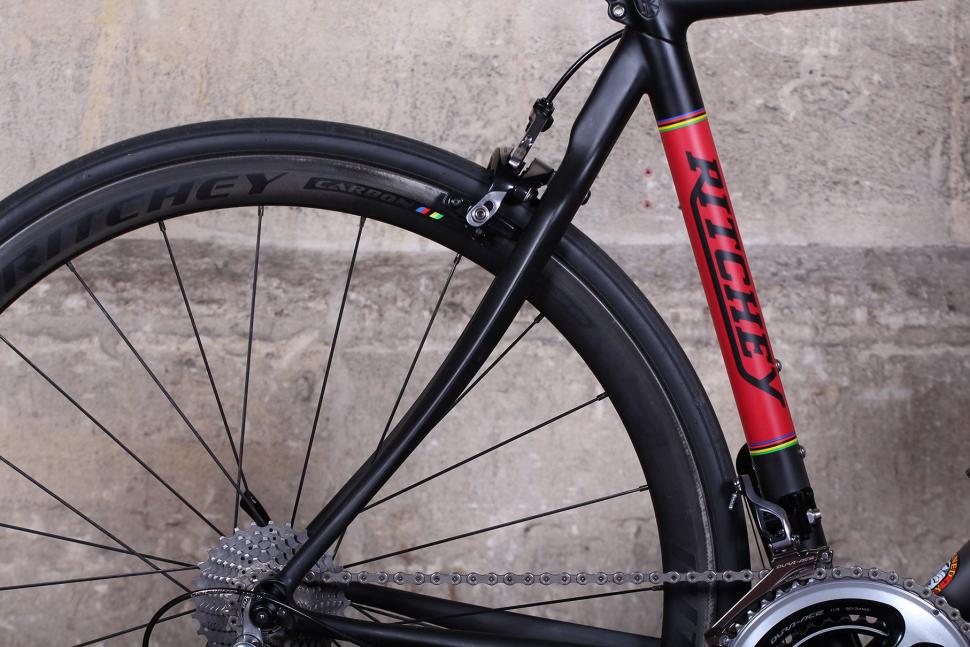



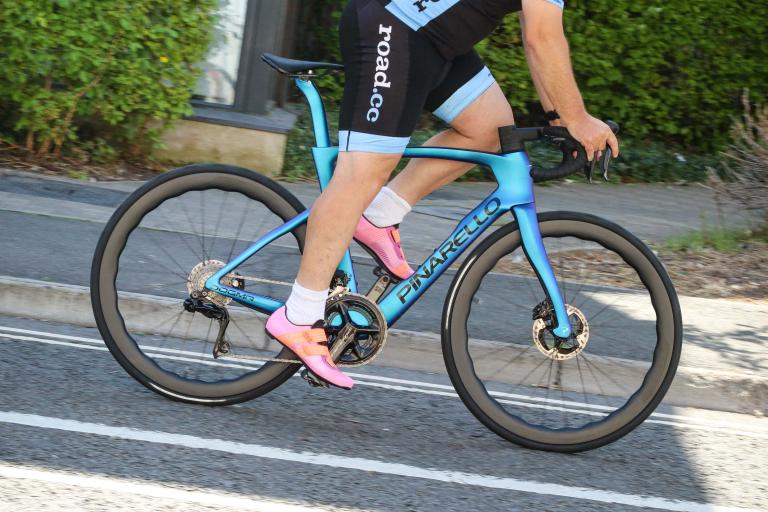
Add new comment
8 comments
I travel for work. A lot. I bought one of these specifically as my travel bike. Stays in the (s&s hard) case between flights. Built up with e-tap, which as mentioned above, is perfect for this application. The sheer convenience from front door to hotel concierge make this bike worth the quite considerable entry price.
Downsides? The rear brake connector tapped annoyingly against the top tube over bumps. Rubber band ‘bumper’ fixed that. Very rarely, when bonking on a climb, I’ve wished I’d brought along my Supersix Evo. But that’s a mind thing, 500g -ish wouldn’t overcome the transport hassles, or improve my climbing skills. Oh, and a flight to Amsterdam, I left the e-Tap batteries behind. User error.
Otherwise, I give it 5 stars
Breakaway version of the new Outback gravel/tour/endurance disc bike - please Mr. Ritchey.
And this bike too.
Be aware that if Easyjet (and I imagine most other carriers are the same) get the slightest sniff that you might be transporting a bike they will still try and sting you for 'sporting goods' charges no matter how small it is! I once carried a bike frame with them in a cardboard box (mixed in with some clothes), well within all of their size and weight requirements for 'normal' luggage and had to argue with them at bag drop that it was not a 'bike' but just bike components. I pointed to their rules and regulations and eventually got through without additional charges. I got the impression that this was a very grey area though and with a different person on a different day, they might see this differently. This had been after I had phoned them up (a pain in the ar$e in itself!) to check that what I was doing would be okay so very frustrating and stressful on the day, at the airport. So if you were actually taking a whole bike, this is clouding the issue further, even if it fits into a relatively normal sized suitcase! You could hope that they just won't ask what is in it I guess!? My problem was mainly because I was taking a cardboard box so they asked what was in it and I told the truth!
When E-Tap arrived I always thought it would be perfect for a Ritchey Breakaway as it would minimise cable faff.
I was wondering if Ritchey ever considered making a disc brake version of the Breakaway? That would be something.
I ask because I've seen at least a few bikes on disc brakes that come apart via S&S frame couplings.
hydraulics/pressurized fluids are prohibited by airlines-Avid cable BB-7s are fine for me on my Dahon Flo.
A bit odd as MTBers have been carrying disc brake equipped bikes on planes for nearly 20 years now.